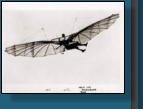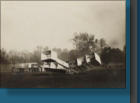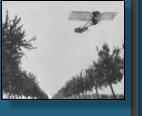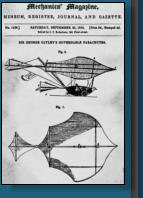

12/17/1903 - First Airplane Flies near Kitty Hawk, North Carolina, Orville and
Wilbur Wright make the first successful flight in history of a self-propelled,
heavier-than-air aircraft. This began the fascination with flight so many people
experience today.
The Wrights knew in order to fly, a craft has to operate against gravity. This
means the power/weight and strength/weight ratios are the main focus in
construction. The craft the wright brothers flew was a biplane built out of wood
with wire bracing.
At this point in history wood was the best option for plane construction. A few
designers later attempted to make planes out of metal, but the technology was
not there yet.
Wood was a popular choice for aircraft construction because of its
advantageous strength to weight ratio, workability, abundance, and low cost.
The largest plane ever constructed—the Spruce Goose—is largely comprised of
spruce. During this time in aviation history spruce was cheaper than aluminum
or steel.
Within a few short years after Wilbur and Orville Wright broke the barriers to
human flight over the beach at Kitty Hawk on December 17, 1903, the basic
structural design of the first generation of powered, heavier-than-air flying
machines was in place: the spar-and-rib wing, the wire-braced, box-girder
fuselage, the wire-trussed, strut-supported biplane wing cell, sealed fabric skin
over the airframe, two-wheel fixed landing gear, and so on. Variations existed of
course, but these features were standard by the outbreak of World War I.
The Longhead brothers were forced to suspend operations in 1921, but were
able to form a new Company in 1926 called the Lockheed Aircraft Company with
the more familiar spelling of their name. The Lougheads patented a method of
forming fuselage half- shells out of spruce veneer in large concrete molds fitted
with a rubber bladder (The veneers were set in place, casein glue was applied,
and the bladder was inflated to force the wood into the mold. After the glue
cured, the shells were removed from the mold, and two beautifully formed
fuselage halves were then joined over a light skeletal framework. This process
cut down on much of the time and weight to create the fuselage. This process
for wooden monocoque construction was employed in a highly successful series
of elegant monoplanes produced by the re-established Lockheed company in
the late 1920s and early 1930s. Amelia Earhart brought worldwide fame to the
Lockheed design when, in 1932, she became the first woman to make a solo
transatlantic flight in her bright red Lockheed Vega. The Lindberghs, Charles,
along with his wife Anne Morrow as navigator, pioneered transoceanic routes
for Pan American Airways in the early 1930s using a low-wing version of the
Lockheed monoplane called the Sirius.
These aircraft also were fitted with plywood covered, stressed-skin,
cantilevered wings virtually identical to those of the Fokker transports, placing
Lockheed aircraft among the most advanced of their day. The cantilevered wing
and the monocoque fuselage were just two of many design innovations that
emerged during World War I and were refined the following decade. As these
structural advances were developed, countless aircraft of a more traditional
design continued to be produced. The reliable wire-braced, fabric-covered
biplane remained popular on airfields for many years.
Many designers prefer to use wooden spars in acrobatic aircraft because the
wood will better withstand the bending loads imposed during aerobatics. Unlike
metal, wood does not weaken from fatigue. This, of course, is an advantage to
the aircraft builder.
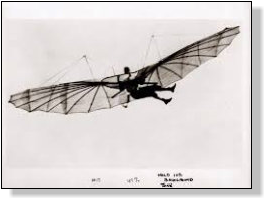
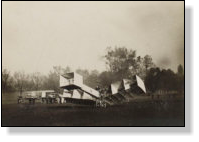
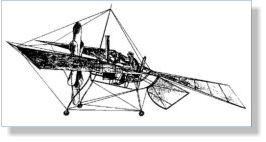
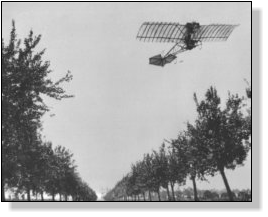
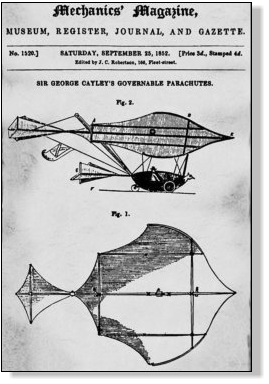
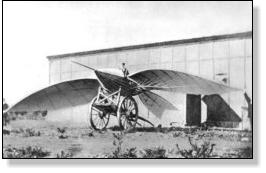
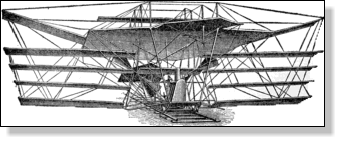

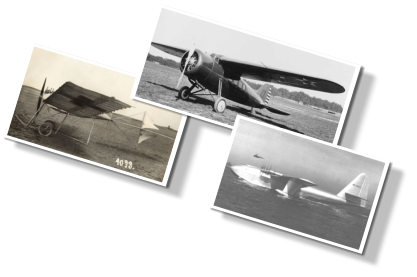
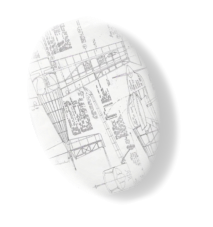


12/17/1903 - First Airplane Flies
near Kitty Hawk, North Carolina,
Orville and Wilbur Wright make
the first successful flight in
history of a self-propelled,
heavier-than-air aircraft. This
began the fascination with flight
so many people experience today.
The Wrights knew in order to fly, a
craft has to operate against
gravity. This means the
power/weight and
strength/weight ratios are the
main focus in construction. The
craft the wright brothers flew was
a biplane built out of wood with
wire bracing.
At this point in history wood was
the best option for plane
construction. A few designers
later attempted to make planes
out of metal, but the technology
was not there yet.
Wood was a popular choice for
aircraft construction because of
its advantageous strength to
weight ratio, workability,
abundance, and low cost. The
largest plane ever
constructed—the Spruce
Goose—is largely comprised of
spruce. During this time in
aviation history spruce was
cheaper than aluminum or steel.
Within a few short years after
Wilbur and Orville Wright broke
the barriers to human flight over
the beach at Kitty Hawk on
December 17, 1903, the basic
structural design of the first
generation of powered, heavier-
than-air flying machines was in
place: the spar-and-rib wing, the
wire-braced, box-girder fuselage,
the wire-trussed, strut-supported
biplane wing cell, sealed fabric
skin over the airframe, two-wheel
fixed landing gear, and so on.
Variations existed of course, but
these features were standard by
the outbreak of World War I.
The Longhead brothers were
forced to suspend operations in
1921, but were able to form a new
Company in 1926 called the
Lockheed Aircraft Company with
the more familiar spelling of their
name. The Lougheads patented a
method of forming fuselage half-
shells out of spruce veneer in
large concrete molds fitted with a
rubber bladder (The veneers were
set in place, casein glue was
applied, and the bladder was
inflated to force the wood into the
mold. After the glue cured, the
shells were removed from the
mold, and two beautifully formed
fuselage halves were then joined
over a light skeletal framework.
This process cut down on much of
the time and weight to create the
fuselage. This process for wooden
monocoque construction was
employed in a highly successful
series of elegant monoplanes
produced by the re-established
Lockheed company in the late
1920s and early 1930s. Amelia
Earhart brought worldwide fame
to the Lockheed design when, in
1932, she became the first woman
to make a solo transatlantic flight
in her bright red Lockheed Vega.
The Lindberghs, Charles, along
with his wife Anne Morrow as
navigator, pioneered transoceanic
routes for Pan American Airways
in the early 1930s using a low-wing
version of the Lockheed
monoplane called the Sirius.
These aircraft also were fitted
with plywood covered, stressed-
skin, cantilevered wings virtually
identical to those of the Fokker
transports, placing Lockheed
aircraft among the most advanced
of their day. The cantilevered wing
and the monocoque fuselage were
just two of many design
innovations that emerged during
World War I and were refined the
following decade. As these
structural advances were
developed, countless aircraft of a
more traditional design continued
to be produced. The reliable wire-
braced, fabric-covered biplane
remained popular on airfields for
many years.
Many designers prefer to use
wooden spars in acrobatic aircraft
because the wood will better
